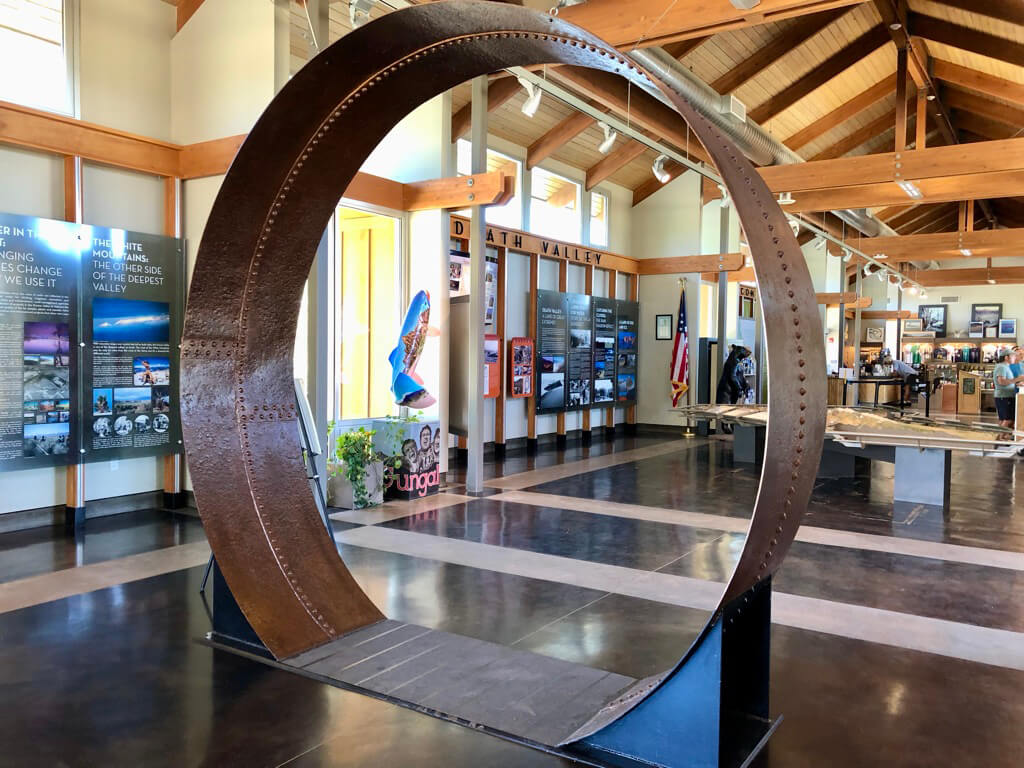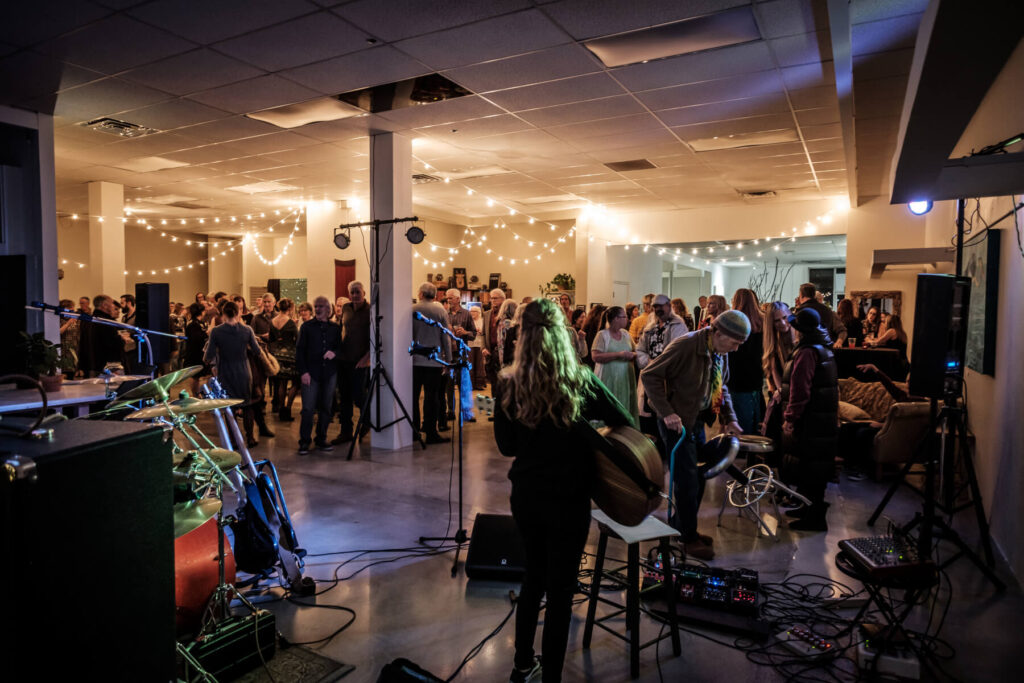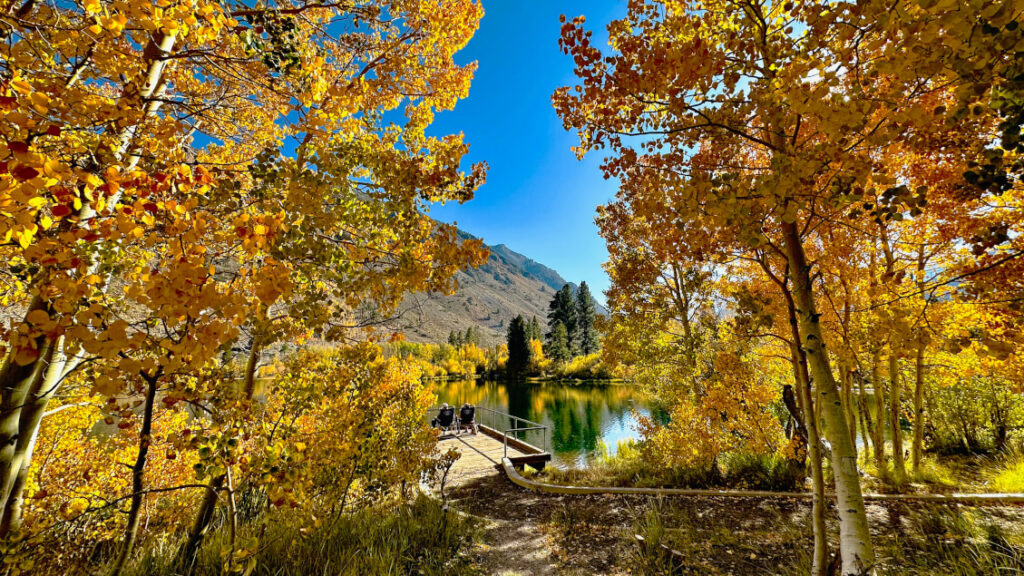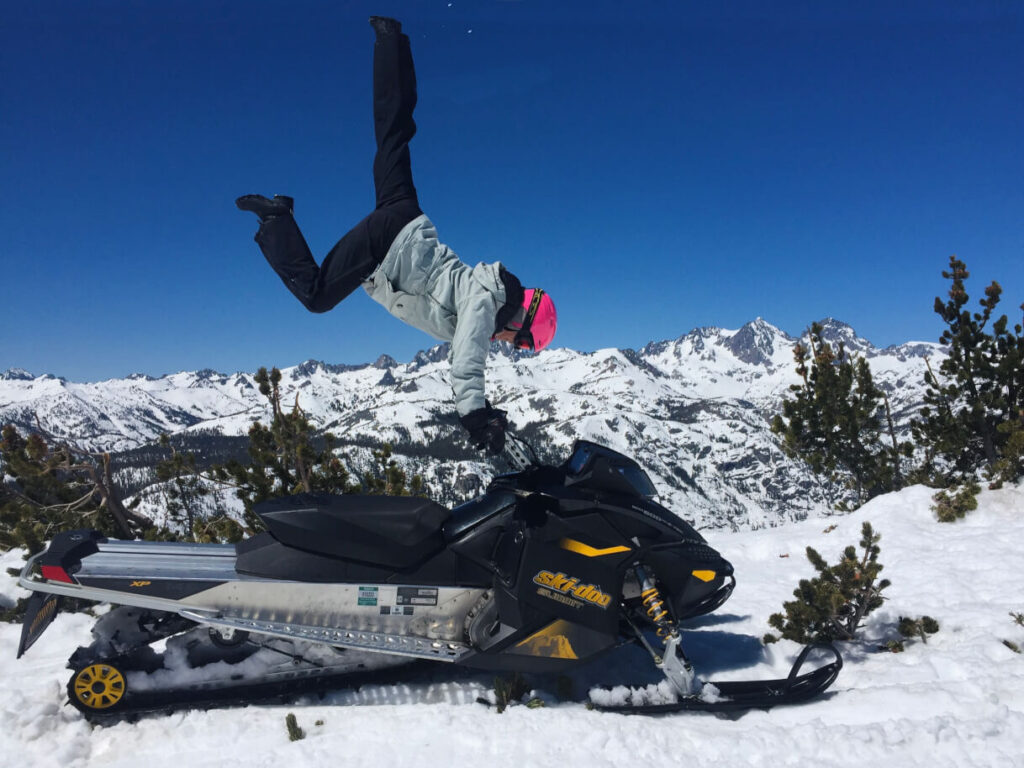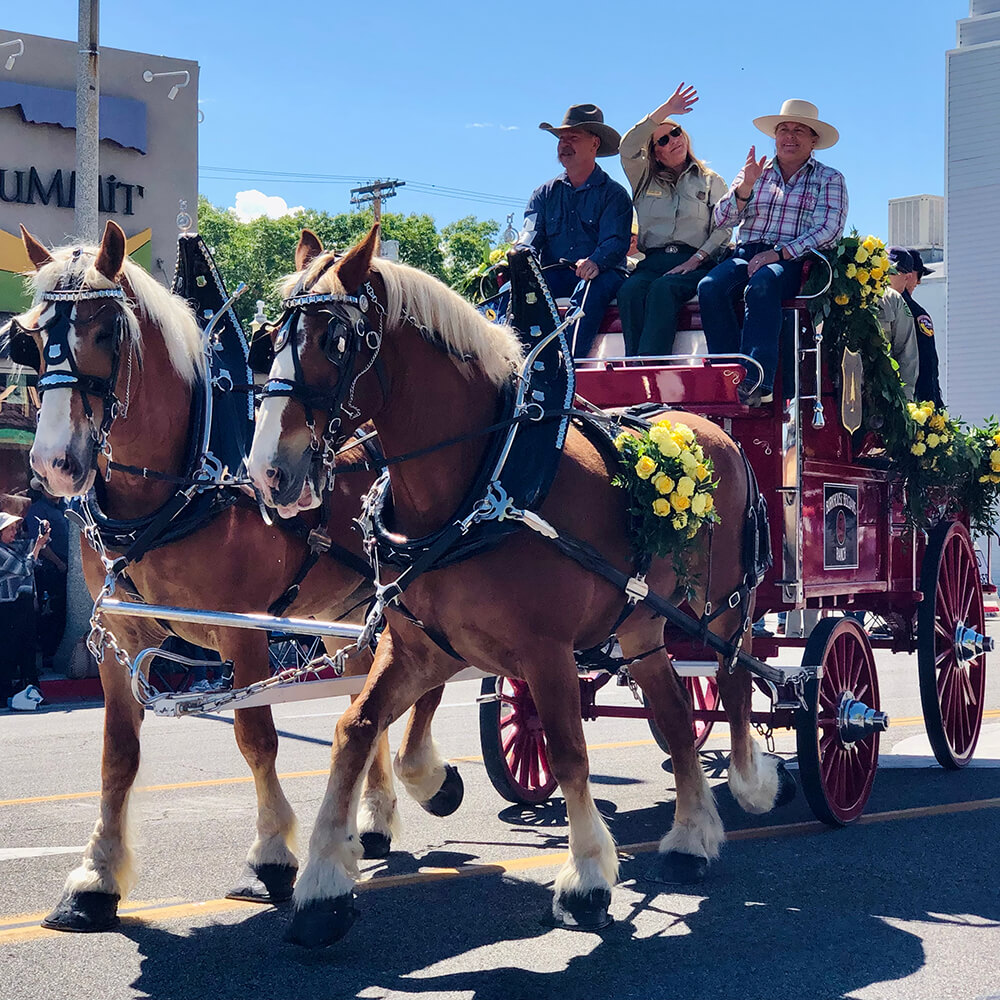Visit these fascinating Museums and Information Centers in the Eastern Sierra
A road trip along US Highway 395 in the Eastern Sierra is not complete without visiting some of our fantastic museums and information centers. These museums that protect the artifacts, stories, and histories of our region, and information centers that guide us to learn, appreciate, and experience the area are as diverse as the region is large.
I’ve spent many wonderful hours in these centers. Each time I visit I learn something new or get deeper into an interesting aspect of our fascinating history. It is a history that is incredibly diverse in culture and nature.
In this story:
Stories of the people who came before, the First Nations and the traditional ways; the explorers and adventurers who braved the unknown; the movie stars and makers of fantasy and fiction; the scientists, writers, artists, and environmentalists; and all the strange and wonderful tales of life in the Eastern Sierra are here to learn and experience in modern museums and old ghost towns.
Visitors who journey along this scenic stretch of California highway tell us of the awe and inspiration they feel from time spent in these delightful museums. Some come away with a deeper understanding of life in the old days, others find fulfillment in the expressions of art; most simply enjoy the moments of wonder and fun.
This guide to the museums and information centers covers a large variety of subjects; from life in the high desert to movie magic, fish hatching to ancient lake, railroads to ghost towns, and a whole lot more, there’s something to thrill all lovers of learning. The marvelous museums in this guide are located along US-395 from Lone Pine to Bridgeport.
Because of the size and topography of the area some museums and information centers are closed or not recommended during the months of extreme weather experienced in the Eastern Sierra. The deserts are very hot in summer, and snow restricts access to some locations in winter. There’s lots to see and many opportunities to see them, so plan your visits according to time, topic, and temperature and experience a road trip of amazing discoveries and incredible learning
Eastern Sierra Interagency Visitor Center
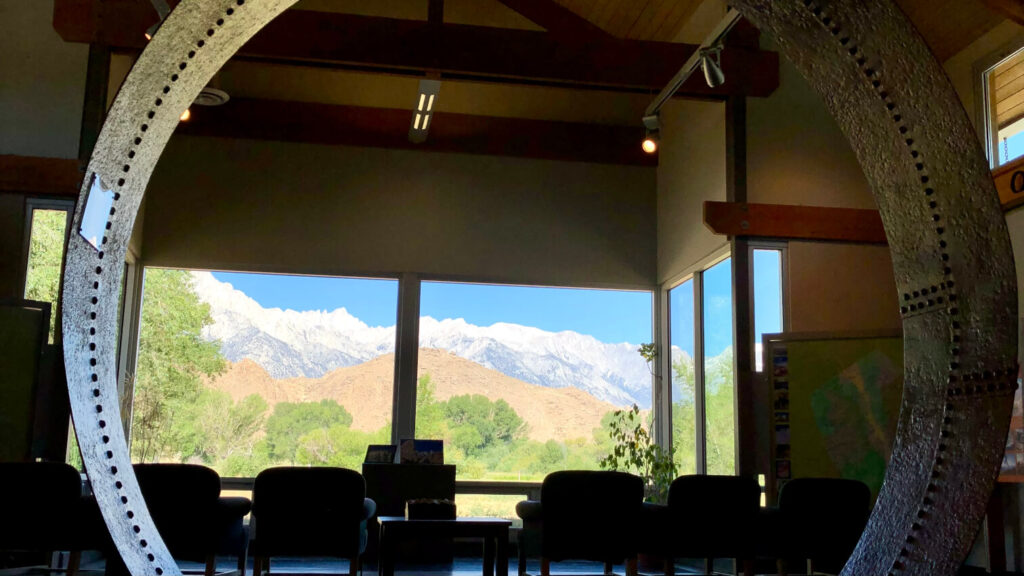
The Eastern Sierra Interagency Visitor Center is situated just south of Lone Pine at the junction of US Highway 395 and CA State Route 136. This beautiful facility is operated by federal, state, and local governmental agencies, including the US Forest Service, Bureau of Land Management, National Park Service, Los Angeles Department of Water and Power, Inyo County, Mono County, California Department of Transportation, and California Department of Fish and Wildlife. A panoramic window provides a wonderful view from of the highest summit in the contiguous United States – Mt Whitney, rising to 14,505 feet ASL.
The Eastern Sierra Interpretive Association (ESIA) operates the Discovery Bookstore at the Eastern Sierra Interagency Visitor Center where literature and information about Mt. Whitney and Badwater Basin, plus many other wonderful attractions in this area can be found. In addition to the natural wonders of this area an impressive display about the Los Angeles Aqueduct is a major feature of the visitor center. The aqueduct has been a controversial and contentious project since its inception and is impressive in its size and scope. The history is chronicled in reports, photographs, and artifacts – the largest of which is a section of the pipe – all testaments to the ingenuity and perspicacity of humans.
Lone Pine Museum of Western Film History
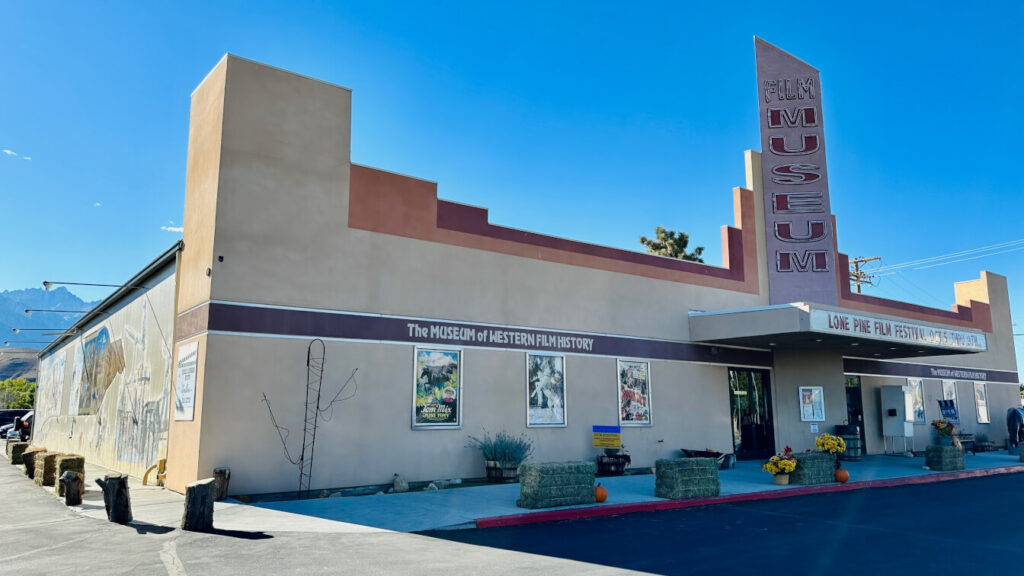
The Lone Pine Museum of Western Film History showcases the pride of Hollywood’s western filmmaking. Fondly called Hollywood’s largest back lot, the Alabama Hills have provided some of the greatest scenic settings in film and television for over 100 years.
Explore the museum’s extensive collection of real movie costumes, movie cars, carriages, original cameras, props, posters, and loads of other fascinating movie memorabilia. Grab a brochure of the back lot and take a self-guided tour along Movie Road and around the Alabama Hills.
Home of Mary Austin
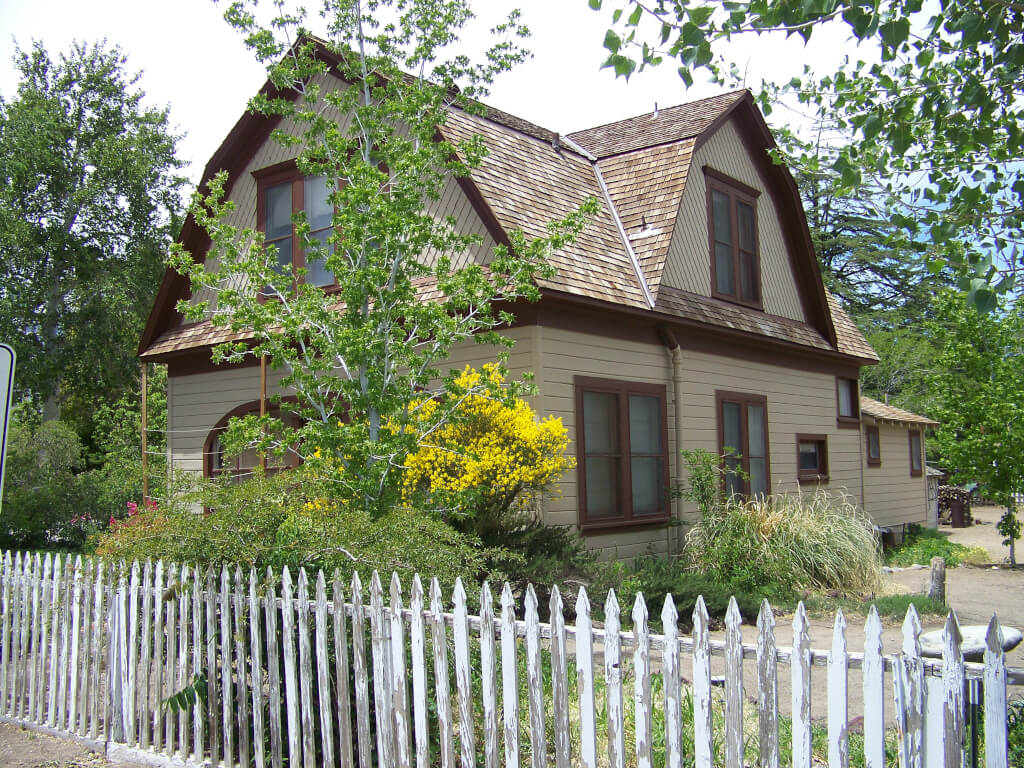
At 235 Market St. in Independence, CA Mary Austin and her husband, Stafford Wallace Austin, built a small house at the “end of the village street.” Here, in the heart of the Owens Valley, Mary Austin wrote her best known and classic work, The Land of Little Rain. It would cement her reputation as an author.
As an early feminist, water-rights advocate, and defender of Native American and Spanish-American rights, she championed the causes that were deeply important to her. The preservation of Native American culture, women’s rights especially regarding birth control, and environmental issues, specifically the industrialization of open spaces and the Los Angeles aqueduct—a battle fought in her backyard, were all of particular concern to her.
Her works are seminal studies into the history and character of the Owens Valley and the high deserts of California. The “brown house under the willow tree” where she lived is now preserved as a California Historical Landmark.
Eastern California Museum
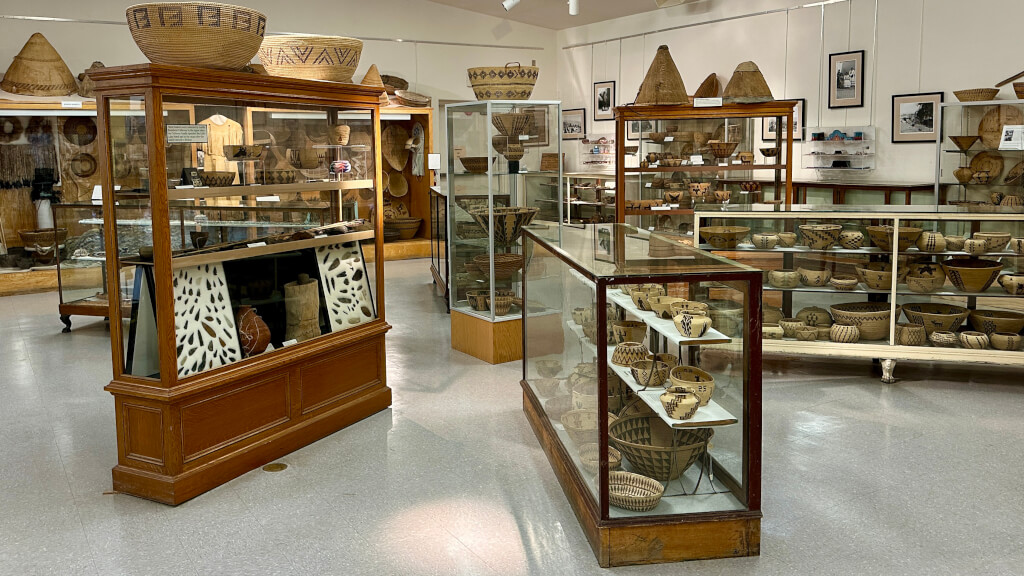
The Eastern California Museum in Independence was founded in 1928 and has been operated by the County of Inyo since 1968. Its mission is to collect, preserve, and interpret objects and information related to the cultural and natural history of Inyo County and the Eastern Sierra, from Death Valley to Mono Lake.
Along with about 27,000 photographs that date from the late 1800s to the 1950s, the museum also houses an extensive collection of artifacts. It also holds an archive of History and Family Files, containing newspaper clippings, original documents, and other information about the towns, people, and subjects that have played a role in the history of Inyo County and the Eastern Sierra.
It houses a vast and diverse collection of Owens Valley Paiute and Panamint Shoshone basketry, one of the largest in the state. The nearly 400 baskets on display, some of which date back almost 100-years, showcase the remarkable artistry and craftsmanship of the region’s Indigenous Paiute-Shoshone people.
Permanent exhibits showcase aspects of life and people in the Eastern Sierra such as: Transportation, Native American communities, the LA Aqueduct, Norman Clyde and much more. Special and rotating exhibits are curated from the extensive collection of photos and artifacts in the museum archives.
Mt Whitney Fish Hatchery
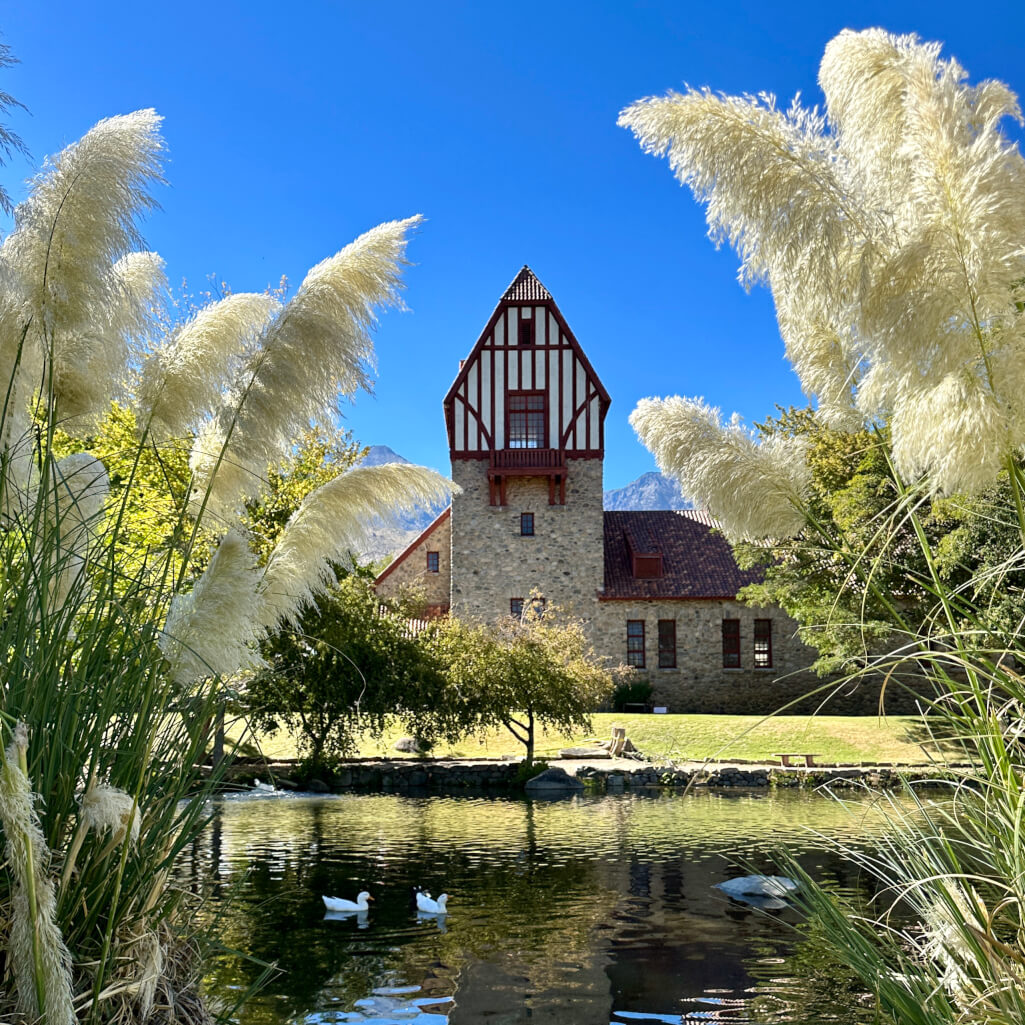
The Mt Whitney Fish Hatchery was once the largest and best equipped hatchery in California. In 2007 a large wildfire burned upstream of the hatchery and a year later a heavy thunderstorm resulted in a massive mudslide that swept down the scarred, barren Oak Creek wash damaging ponds, water supplies, and employee homes. The main building escaped the muddy flood and the facility is now an educational facility that serves to preserve the historical significance of the hatchery and promote awareness and understanding of our natural resources.
The architecture of the Mt. Whitney Fish Hatchery was inspired by the local landscape. Architects were directed “to design a building that would match the mountains, would last forever, and would be a showplace for all time.” This stately structure, in Tudor Revival style, and the picturesque grounds are an integral part of the Owens Valley economy and community spirit.
Feed the fish. Watch the informative video. Read the interpretive displays. Wander the grounds. Get a feel for fishing in the Eastern Sierra.
Manzanar National Historic Site
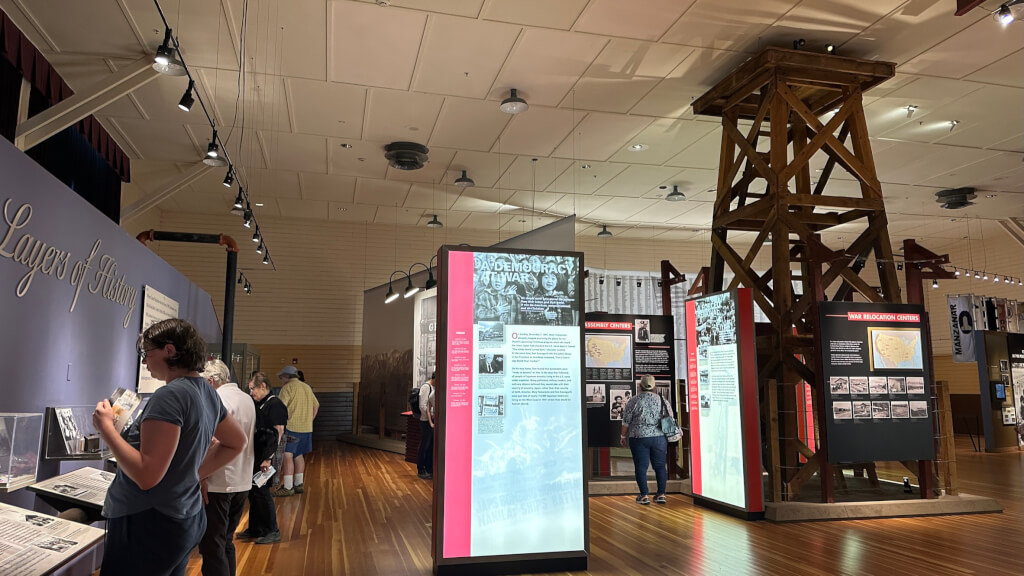
Over 10,000 Japanese American citizens and resident Japanese aliens (men, women and children) spent all or part of World War II detained in this facility. It was called the Manzanar War Relocation Center and was one of ten such camps in the US that, in total, interned almost 120,000 people during WWII. Today the Manzanar National Historic Site and memorial is a stirring reminder of a period in our history that should not be forgotten.
The Manzanar Visitor Center and a few remaining original structures are in a large tract of land (814 acres of an original 6,200 acres) just 10 miles north of Lone Pine. The center has 8,000 square feet of exhibits, a bookstore, and a theater that shows the award winning 22-minute documentary, Remembering Manzanar.
A centerpiece of the exhibit is a large graphic with the names of over 10,000 Japanese Americans who spent many years in this detention facility. Among its other exhibits is a large-scale model of the Manzanar War Relocation Center crafted by former internees. The facility was designated as a National Historic Site in 1992 and is managed by the National Park Service.
Schulman Grove Visitor Center
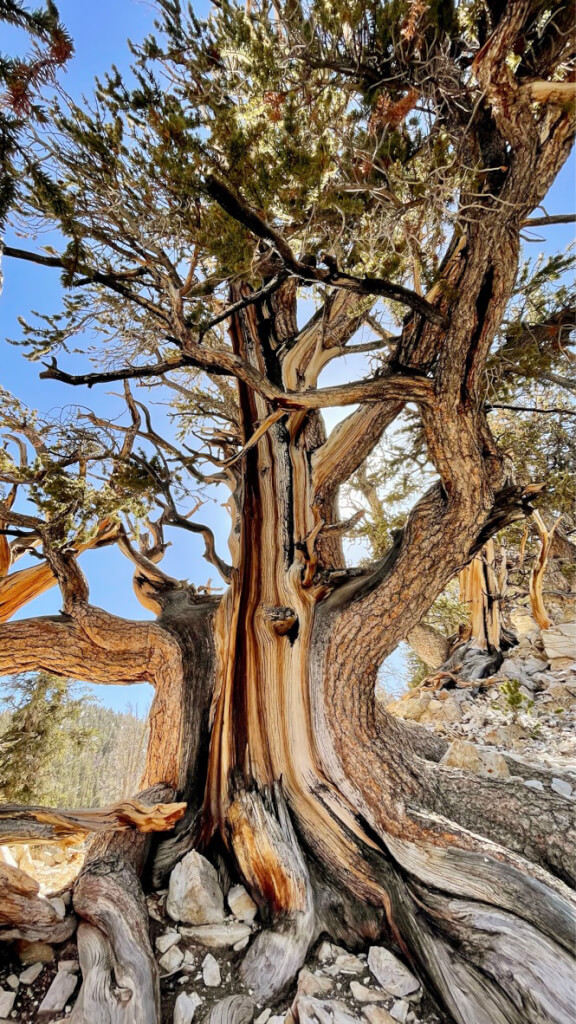
The oldest, still living, beings live in the White Mountains above Bishop. The Great Basin bristlecone pines are the longest living non-clonal organisms on the planet. Methuselah, the oldest tree in this forest, is almost 5,000-years old. Many more individuals in the Ancient Bristlecone Pine Forest are well over 4,000-years old. They are gnarled, weather-beaten, and resilient; and they live at high elevations between 9,000- and 11,000-feet above sea level.
The Schulman Grove Visitor Center, named for Edmund Schulman who discovered the trees, is open annually from mid-May through November, weather permitting. The visitor center has a gift shop, interpretive displays, and an informative film about the trees and their contribution to the scientific community. Rangers and docents give talks on summer weekends. Spread a blanket in the forest or set up a picnic on the tables in the visitor center grounds.
There is no food or water available at the center, which is situated at 9,846-feet, and, although the air is cooler up here, the sun is hot. Bring plenty of water with you and keep your fluid intake high; wear sunscreen, a hat, and sunglasses.
Take a walk along the Discovery Trail, it’s just less than a mile through the Schulman grove and the views westward toward the Sierra Nevada are spectacular. For the more adventurous, hike the Methuselah Trail, a 4.5-mile trail that loops through the Methuselah Grove where Methuselah lives, now 4,857-years old. It is unmarked to protect its identity.
Did you know these trees are known as the trees that rewrote history?
Owens Valley Paiute Shoshone Cultural Center
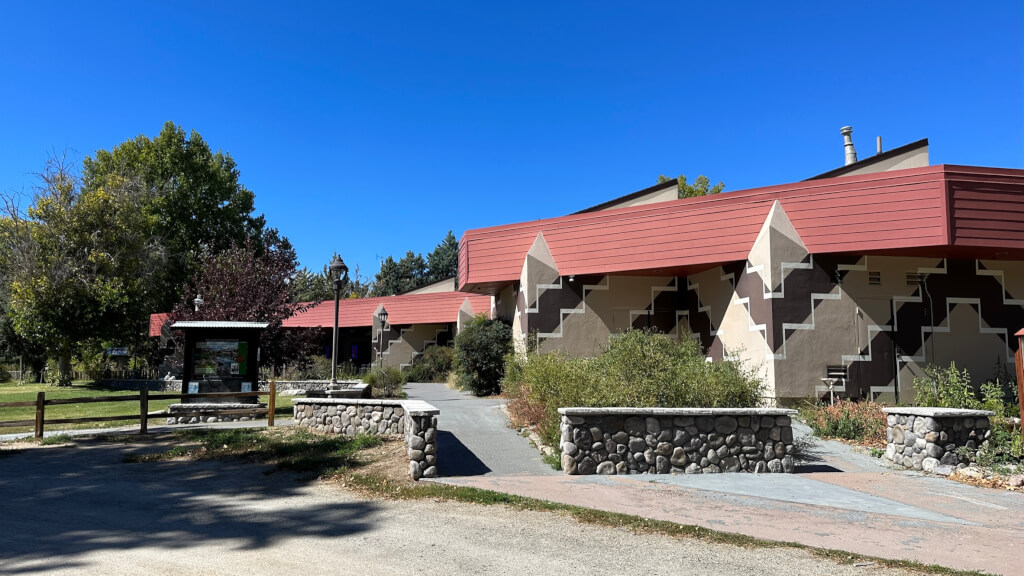
The Owens Valley Paiute Shoshone Cultural Center is both a museum and cultural center that serves the community and safeguards the history of the Indigenous Peoples of Payahuunadü, the land of flowing water. It is a place to preserve and tell the story of the old ways and a place for the community to come together to learn, teach, and continue the traditional ways.
The Bishop Paiute Tribe is a sovereign nation located in the heart of the Eastern Sierra adjacent to Bishop. It is the fifth largest tribe in California with about 2,000 enrolled members. The Cultural Center is located on tribal lands, just 1.5 miles from the center of Bishop. The Gift Shop has a beautiful selection of beadwork, silverwork, and artwork created and designed by local tribal artisans.
Bishop Information Center
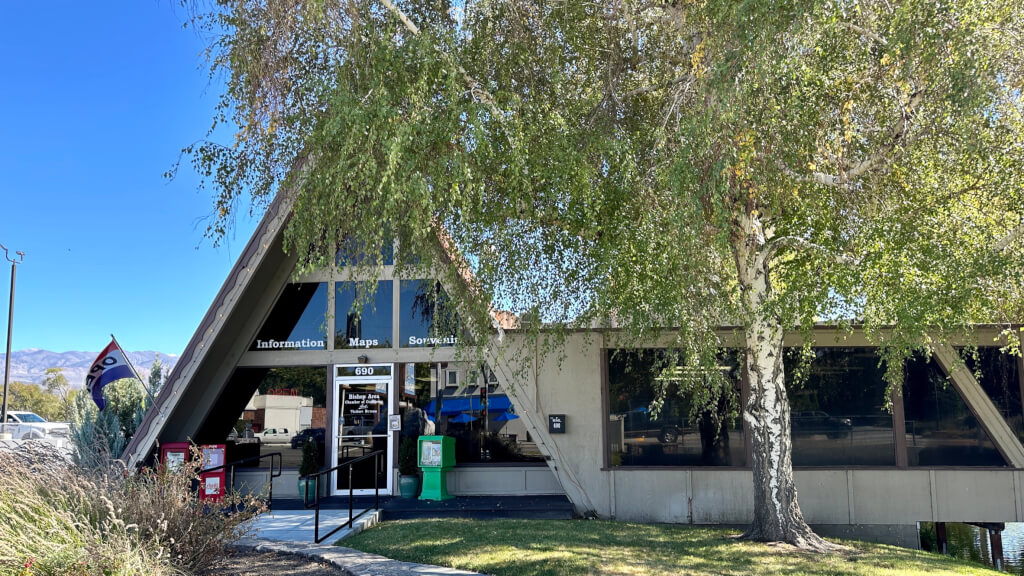
Bishop is the largest town in the Eastern Sierra and centrally located. It calls itself, “The small town with the big backyard.” In the heart of downtown Bishop is the Bishop Information Center located in the Bishop City Park. This delightful A-frame building is bursting with books, brochures, maps, posters, and locally made crafts and goods, representative of the beautiful Eastern Sierra.
The knowledgeable, friendly staff can provide information, make suggestions about local events, attractions, and activities, and give you current road and weather conditions. They can make recommendations on lodging, dining, and shopping.
These are some of the many activities that can be done in Bishop’s big backyard: fishing, rock climbing, road biking, mountain biking, trail running, photography, fall color spotting, birding, swimming, kayaking, snow sports, flying, OHV driving, hiking, camping, rock hounding, hot tubbing, and even more. This small town has all the amenities for fun vacations with great lodging, excellent restaurants, bars, breweries, distillery, bakeries, specialty shops, galleries, and museums. Most are independently owned and operated, and you’ll get a unique experience with local flavor.
Laws Railroad Museum and Historical Site
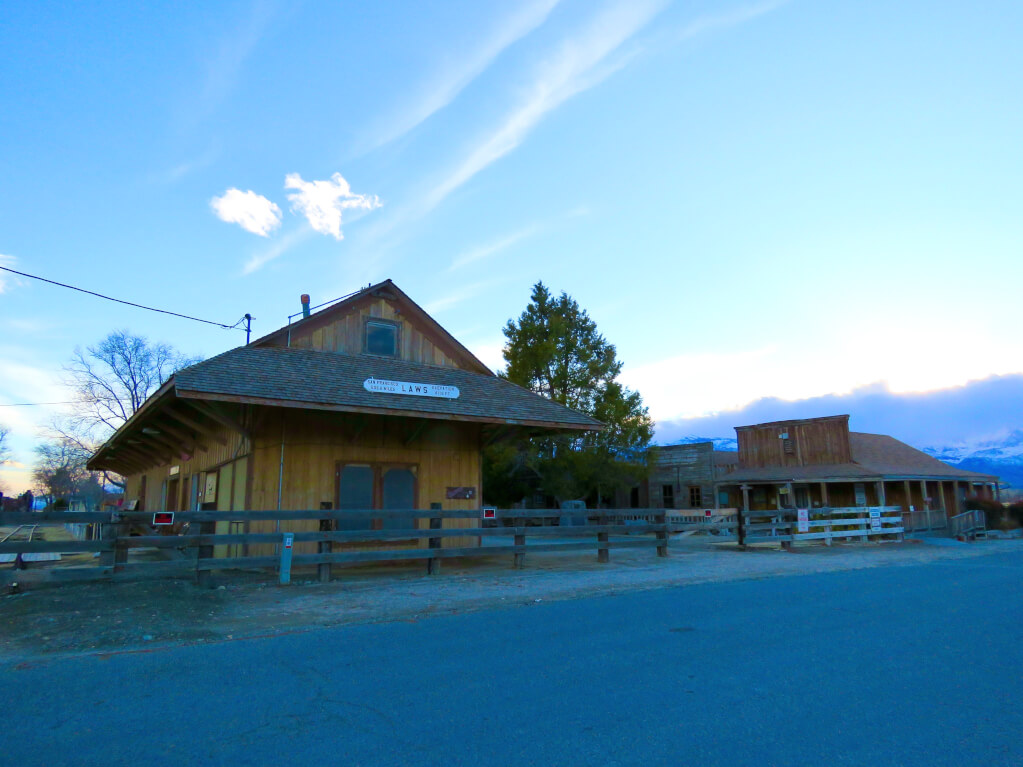
Take a trip back in time and experience the daily life of the early settlers of the Owens Valley. The Laws Railroad Museum and Historical Site celebrates the rich history of the period and tells of a time when the railroad station was the heart of a bustling western town. Close to 50 authentic structures on eleven acres are filled with artifacts and original objects that depict the lifestyles of the homemakers, artisans, and townspeople of the period.
All the historic buildings are original structures. Some, like the Laws Depot, the Agent’s house, the locomotive turntable, and the oil and water tanks were constructed right here and have stood on this site since the first train rolled in in 1883. The section of narrow-gauge track that remains on the site still carries restored and working railroad cars – all dating back to the early days of the railway.
Mammoth Lakes Welcome Center
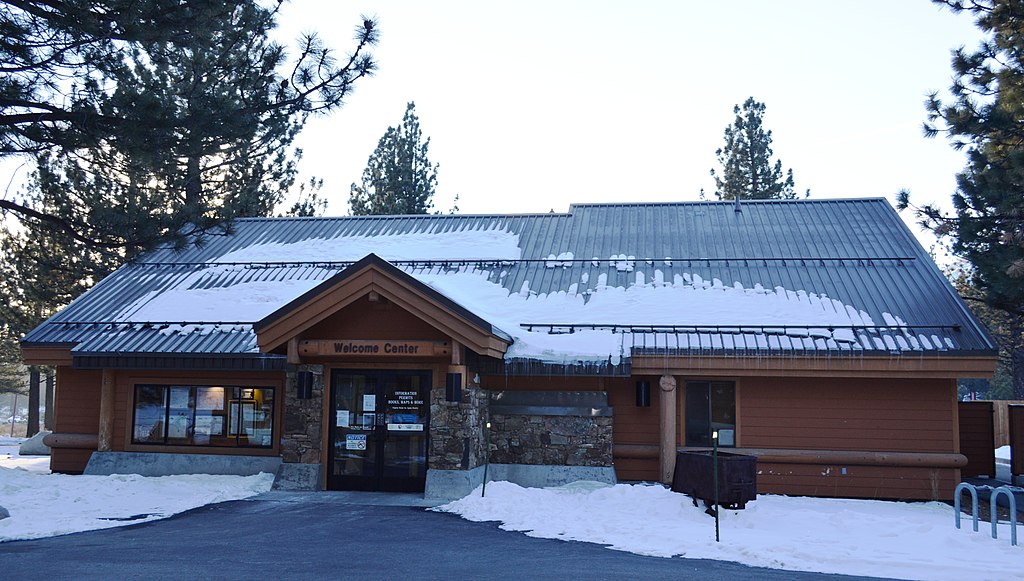
Just off US-395 lies the vibrant town of Mammoth Lakes. It’s best known as a winter playground centered around Mammoth Mountain Ski Area, one of California’s premier winter resorts. The town with its extensive outdoor recreation opportunities is a year-round destination for adrenalin-fueled fun and laid-back family friendly activities.
Upon entering town along CA-203 visitors can stop in at the Mammoth Lakes Welcome Center, operated jointly by the National Park Service, U.S. Forest Service, and Mammoth Lakes Tourism, in partnership with the Eastern Sierra Interpretive Association.
This center is a centralized hub for guests and locals alike, and is a worthwhile stop for visitors to this part of the Eastern Sierra to learn about the region. It features a bookstore with an excellent selection of local books, brochures, maps, guides, and gifts. The welcome center staff and volunteers are knowledgeable and helpful and can provide trail information, current weather and fire conditions, assist in securing wilderness and fuelwood permits, and help with the purchase of Interagency passes or bear-canister rentals.
Find out about all the seasonal activities which are many. In winter it’s a vast playground for snow sports from sledding to skiing and snowboarding to snowmobiling. Summer is mountain biking heaven, rock climbing, fishing, kayaking, hiking, and much more. In spring is possible to ski and mountain bike on the same day. Fall is leaf peeping season and the colors abound. Ask about Devils Postpile and Rainbow Falls.
Mammoth Museum at Hayden Cabin
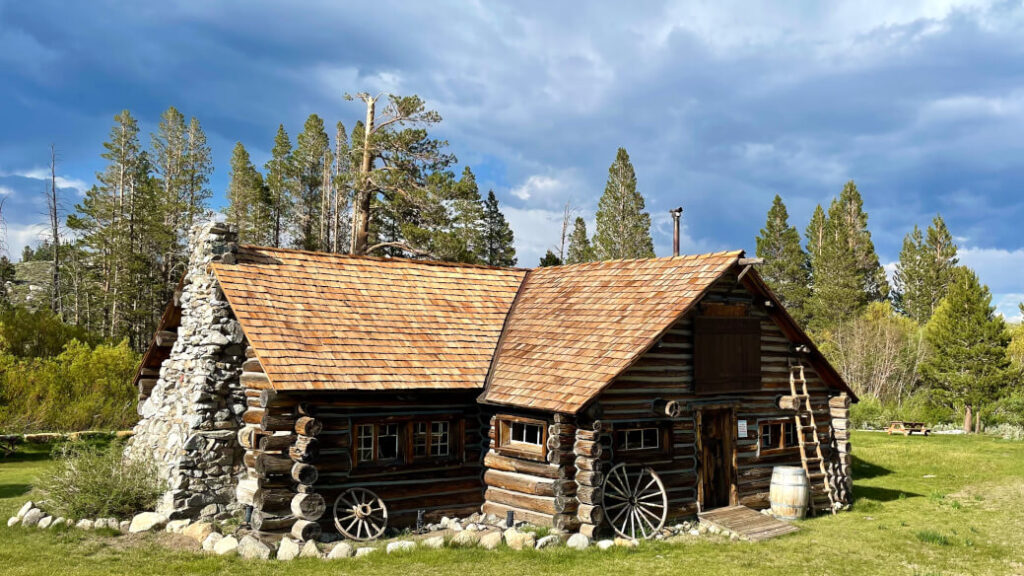
Constructed in 1920 by an early map maker of the Eastern Sierra, Emmett Hayden, the Hayden Cabin was once an angler’s retreat. Today it houses the many photographs, documents, artifacts, and stories of the old days. Experience historic Mammoth Lakes during a visit to this restored structure in a park-like setting along the burbling Mammoth Creek. The venue also hosts music events, lectures, educational programs, and can be rented for private functions. Come enjoy a picnic on the lawn during the museum’s summer season. Experience historic Mammoth Lakes through artifacts, photographs, displays, storytelling, music events, programs, and lectures. Closed in winter.
Mono Basin Scenic Area Visitor Center
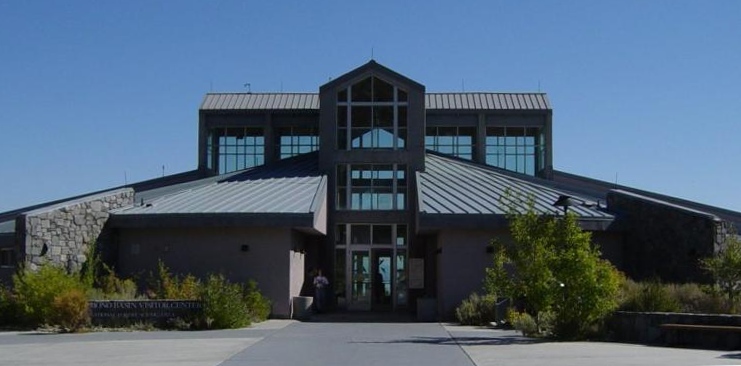
The Mono Basin Scenic Area Visitor Center, ½-mile north of the town of Lee Vining, is open seasonally in the warmer months and houses beautiful interpretive displays about the wonders of Mono Lake. It is geographically, geologically, and historically unique and wonderful. Of its many fascinating features, none are stranger than the Tufa towers that appear to rise out of the water in unearthly formations.
These tufa towers are calcium carbonate deposits which form under the lake’s surface as freshwater springs bubble up into this excessively salty and alkaline lake. The lake in its present form was probably created by the Long Valley eruption some 760,000 years ago, but it is thought that it may also be a remnant of a larger, older lake that covered much of Nevada and Utah and is 1‑million years old now, one of the oldest lakes in north America. This desert lake lies in a closed basin, which allows no outflow of water, resulting in high levels of salt in the water. Even so it has an unusually productive ecosystem revolving around the brine shrimp that thrive in its alkaline waters.
The lake was named for the Mono People, a Native American Paiute tribe that historically lived in the area. The county was named after the lake. It is pronounced moh-no.
Mono Basin History Museum
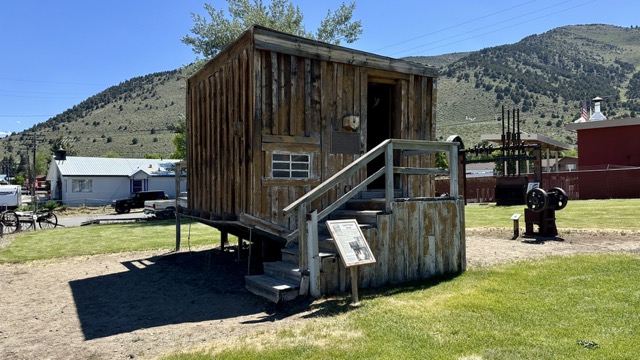
Original equipment, artifacts, tools, and memorabilia from the early Native American inhabitants to the miners and settlers who moved here are on display in the Mono Basin History Museum located in Lee Vining, near Mono Lake. Mono Lake (pronounced moh-no) is a large, shallow saline soda lake that dominates the landscape in this part of Mono County. More about the natural history of this lake can be seen at the Mono Basin Scenic Area Visitor Center ½‑mile north on the shores of the lake.
The Mono Basin History Museum, located in the original Mono Lake schoolhouse, chronicles the cultural history of the people and the trials and tribulations of their lives in this remote and challenging landscape.
One fun and fascinating exhibit on the grounds of the museum is the Upside Down House created by Nellie Bly O’Bryan. It was a revolutionary art installation project that was said to be first ever “manmade” (woman‑made?) tourist attraction in Mono County in 1956. Read more about it here in my blog, 13 Weird & Wonderful things to see in the Eastern Sierra.
Bodie State Historic Park
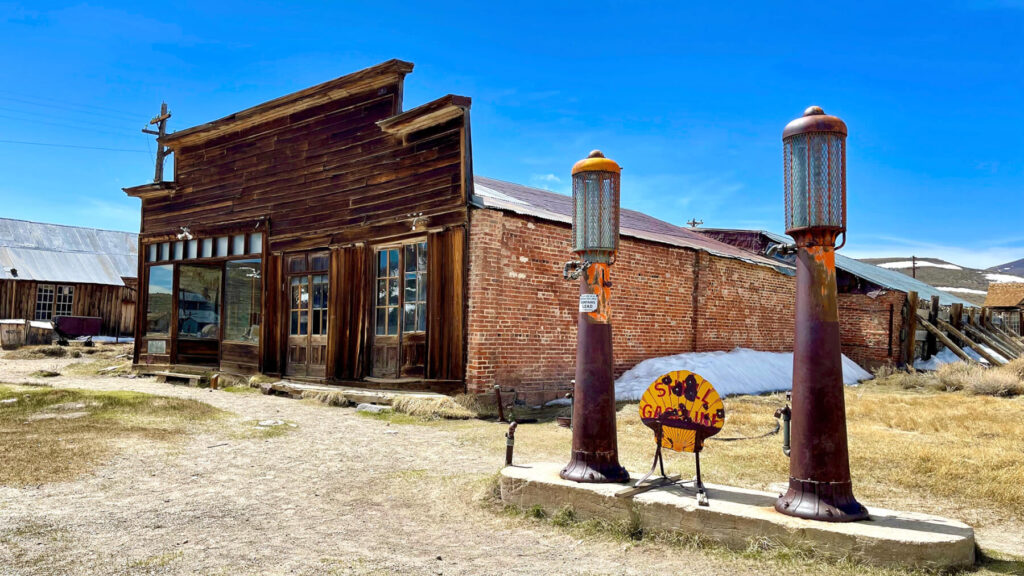
Bodie State Historic Park is about 25-miles north of Mono Lake, the last 10-miles along a dirt road that can be somewhat rough. Although the park is open from about mid-March, the road may be closed to regular vehicle traffic due to snowpack. Oversnow equipment is necessary and required to reach the park during early spring—call the park and check road conditions online. Mid-summer is the perfect time to visit this sprawling ghost town.
As many as 10,000 people once lived here on this harsh, cold, windswept, plain. They toiled in search of a better life lured by the promise of gold. As quickly as the town boomed in the 1880s, it declined less than two decades later and by the early 1900s it was declared a ghost town. Of the 2,000 buildings that made up this once prosperous western gold-mining town, now only about 110 structures still stand in a picturesque state of arrested decay. It is said to be one of the best-preserved ghost towns in the western USA.
Mono County Museum
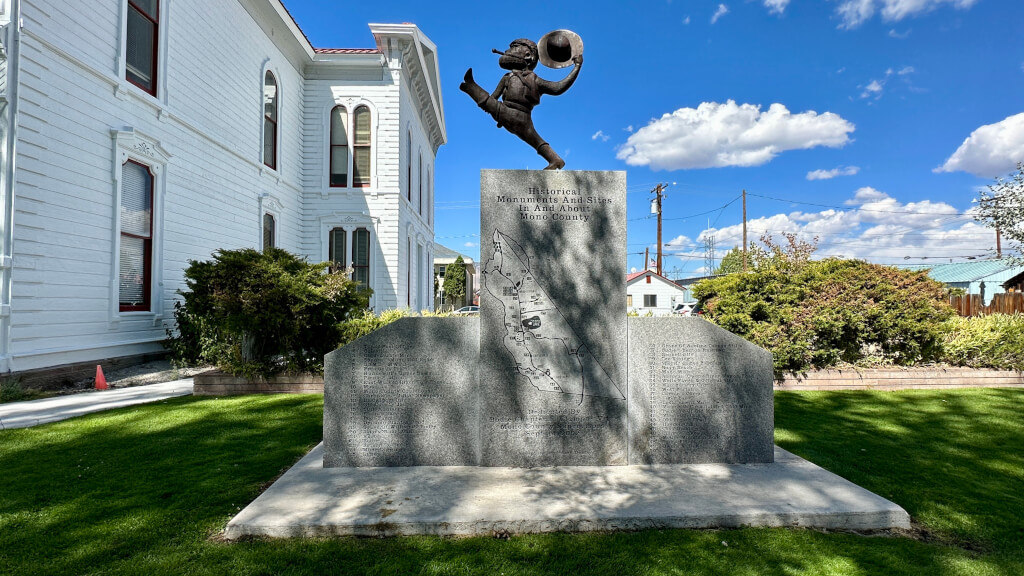
Located in Bridgeport, the Mono County Museum is in the original Bridgeport Elementary School built in 1800 and subsequently moved to Bridgeport Park in 1964. It is operated by the Mono County Historical Society founded by prominent watercolor artist Lee Symmonds to “preserve and promote the history of the Bridgeport Valley and northern Mono County, California.” The museum houses and displays documents, photographs, and artifacts of the area. It’s a place where visitors can experience the pioneering spirit of the people who lived and worked here in the 1800s.

